2015 Meetings OutlookDecember 1, 2014
The View From Industry Insiders By Coastal Communications2015 Meetings Outlook
The View From Industry Insiders
Everything is looking up for the meetings industry in 2015, which is a mixed blessing for planners: Group demand is up, but so too are room rates and travel costs. That reliable old supply and demand thing.
“The meeting industry overall appears to be very much ‘back in business,’ ” said Issa Jouaneh, vice president and general manager, American Express Meetings & Events in the 2015 Global Meetings Forecast, which predicted that group hotel prices would rise by 4.6 percent, thanks in part to increasing group demand. A recently released PwC lodging forecast projects a 2015 U.S. occupancy of 64.9 percent, the highest since 1984. “Group demand improved significantly in the third quarter, leading to stronger-than-expected occupancy levels,” according to Scott Berman, PwC principal and U.S. hospitality and leisure practice leader. “Despite an evolving supply pipeline, industry demand trends are expected to remain robust, giving confidence to the operating community to drive room rates higher in 2015.”
Add to this rising airfares (5 percent), F&B catering costs (4 percent), audio-visual (3.1 percent) and meeting rooms (2.5 percent), as reported in MPI’s fall Meetings Outlook, which also noted, not surprisingly, that planners are challenged with shorter lead times.
To keep the meetings momentum going in the face of rising costs, American Express predicts an uptick in meeting budgets made possible by a more disciplined approach, with increased scrutiny, transparency and attention to compliance and strategic objectives. In addition, the Forecast noted “a continued push to stay close to home and host meetings where the largest number of attendees live.”
The cruise meetings segment is growing, too, says Christine Duffy, president and CEO of Cruise Lines International Association. See her column in this issue under Perspective.
We asked other leading industry experts to put their fingers on the pulse of the meetings industry heading into 2015. Responses reflect a range of perspectives, from an industry-wide view to what’s happening and is predicted to happen in their own backyards. Their thoughts and opinions follow.
THE OVERALL PERSPECTIVE
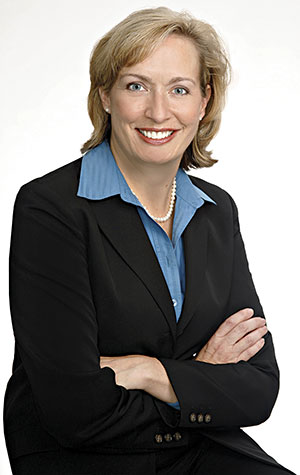 THE INDUSTRY IS GETTING STRONGER
THE INDUSTRY IS GETTING STRONGER
Karen Kotowski, CAE, CMP, CEO
Convention Industry Council
The meetings industry is strong and its outlook is positive, as we near the end of 2014 and head into 2015. Building upon the work of our members, industry partners and supporters, the Convention Industry Council (CIC) is poised to continue working towards its mission to promote a strong meetings, conventions and exhibitions industry by championing the economic and social value of the industry.
Continuing to emphasize the importance of face-to-face meetings and their impact on the U.S. economy, the CIC members released an updated Economic Significance of Meetings to the U.S. Economy study in early 2014. The results, representing the U.S. share of the total global market, showed that the economic output and job growth continue and that the industry is getting stronger. Other countries, including Mexico, Canada and Scotland, are following the methodology used in CIC’s study in their own regions to lend data toward a global picture of this impact.
While the economy has continued to rebound, the market has seen a shift towards the sellers with increased demand for hotel rooms, meeting space and event services.
Technology is changing at an accelerating rate, creating both opportunities and challenges. One of those is hotel room block poaching , defined here as the threat from businesses that actively seek to recruit or divert event attendees from official room blocks and into other hotel bookings which can be both legal and illegal, and has affected many aspects of the industry. CIC’s Accepted Practices Exchange (APEX) has been working with industry stakeholders to create education, best practices and other resources to aid meeting professionals in managing room blocks. This information should be available in early 2015.
Looking ahead to 2015, we feel that there will be continued growth of the industry particularly in global markets outside of North America. While face-to-face meetings remain a critical component to moving businesses forward, the growth of virtual and hybrid meetings will continue to adapt, creating more opportunities for those who cannot travel due to limited time or money to participate in meetings. Mobile technology and social media platforms will continue to rank high among the growing resources for planners and suppliers to both conduct and market meetings more successfully.
CIC is also continuing its commitment to advocating for the industry through a stronger, unified voice, through the work of its Meetings Industry Advocacy Hub, created in partnership with Voices in Advocacy and the efforts of the Meetings Mean Business (MMB) Coalition (see opposite), of which CIC is a proud member. Leaders in the meetings industry should be among its strongest and most vocal supporters, but effective advocacy also needs the support of an engaged network of industry professionals committed to promoting the benefits of meetings to communities and commerce.
As we look ahead to 2015, CIC is encouraged by the strides the meeting and events industry has made in recent years and is excited about helping it grow stronger, and more vibrant than ever.
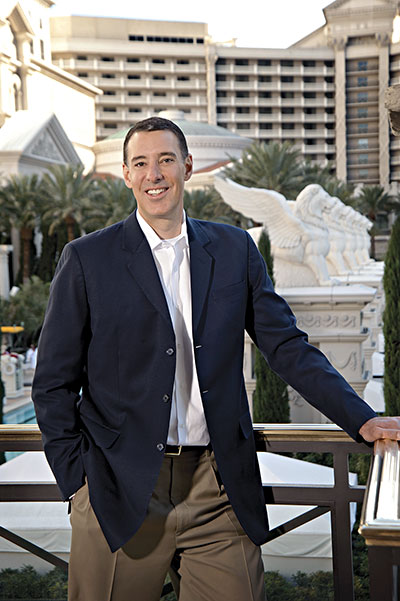 FACE TIME IS MONEY
FACE TIME IS MONEY
Michael Massari
Vice President
Caesars Entertainment
Face time is money. Look back just a decade, and we can see an era where many meetings were booked by senior leaders without a true understanding of why the meeting was needed. Then when the recession hit, many of those meetings were canceled. They were canceled in part because the value of face-to-face wasn’t truly understood by the senior leaders. Over time, the meetings program for those companies was added back because they began to really understand the value of face-to-face.
Senior leaders now know what needs to be communicated in meetings and exactly why these meetings are important. They’ve dissected different platforms including virtual meetings, teleconferences and WebExs, and discovered they cannot replace the benefits of a face-to-face meeting. In today’s multitasking work world, it is important to create a more focused environment with fewer distractions.
The 24/7 work environment is leading the trend to do more with less time. Content is presented in shorter sessions, and more audience engagement tools are being used. It is important to be able to get the attendee to be “in the moment” and enthused to be there. The use of images will continue to be seen, and the use of shorter video will be on the rise. Attendees are seeking to be actively engaged versus being passive listeners. Facilitation of discussion and participation through room setups is being seen to encourage engagement. Creating special events, ones which the attendee couldn’t do on their own, are being sought-after to create distinctive experiences. The experience is carried from start to end to help keep the event alive through the year. This helps the attendee to remember the event — and excited to come back next year. Local elements are tied into the event to create a sense of place for the attendee. Offerings of farm-to-table produce, regional cuisine and engagement in local volunteer opportunities and outside activities are seen.
The embracement of technology will continue to be seen in 2015 with more items being done digitally. Less printed material will be used, further pushing the industry forward into a paperless trend. Websites, apps and social media will continue to be used to push information out to attendees. These technological platforms offer the opportunity for rich analytic data to be compiled, which will help make business decisions to improve customer interaction.
2014 was a fantastic year. 2015 and 2016 are anticipated to be good years as well. In 2015, meetings will continue to play a pivotal role in increasing visibility for companies around the world.
THE HOTEL PERSPECTIVE
RECORD DEMAND
Mike Dominguez
Senior V.P. of Sales
MGM Resorts International
One of the greatest challenges today for the meeting professional is the lack of availability because of record demand and no significant new supply being added to the meetings market.
Date and pattern flexibility are part of the discussion for the first time in many years. Add to that pricing pressures that are being experienced from airfare to rapidly increasing food and beverage prices, and you have a very challenging and complex meetings environment.Meeting Personalization Through Technology
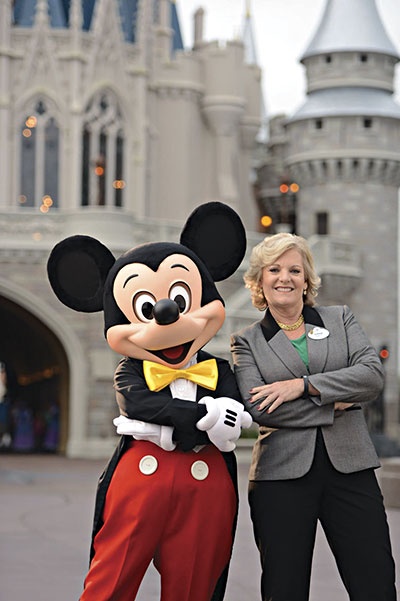 MEETING PERSONALIZATION THROUGH TECHNOLOGY
MEETING PERSONALIZATION THROUGH TECHNOLOGY
Anne Hamilton
Vice President of Resort Sales & Services
Disney Destinations
Technology continues to expand the ability of businesses to interface and share information. While it will never replace face-to-face meetings, new tools it creates enhance the experience when people come together and bridge connections to those unable to participate in person. Social media, mobile technology and other tools have brought a new level of personalization to people’s lives, and attendees demand the same from meetings and events. They don’t want to just attend meetings; they want to be part of an experience.
In the year ahead, the industry will see continued growth in meeting personalization and the integration of mobile technology. We took a giant step in this direction at Walt Disney World with the recent launch of MyMagic+. It takes Disney guest service to a new level — more customized and more seamless. It’s also reshaped the attendee experience, letting group members plan as individuals and design the Disney visit they want, personalizing everything from at-home planning to in-park experiences. Attendees also can change selections “on the go” through MyDisneyExperience — an online and mobile app resource. Like technology, MyMagic+ is an evolving innovation, and we’re excited to see what the future holds.CSR: a Requirement, Not Just a Preference
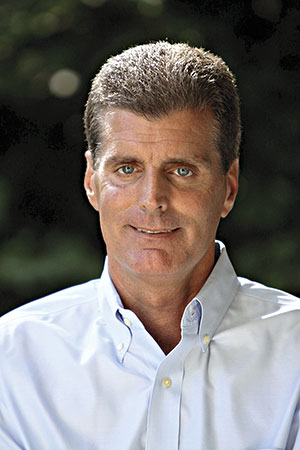 CSR: A REQUIREMENT, NOT JUST A PREFERENCE
CSR: A REQUIREMENT, NOT JUST A PREFERENCE
Dave Marr
S.V.P., Brand Management, North America
Starwood Hotels & Resorts
As we begin to plan for 2015, a trend that is truly becoming a pillar in the meetings industry is the focus on sustainability and CSR. Client requests prove that programs addressing energy, water and greenhouse gas emissions reduction goals and the supply chain are no longer just a preference, but a requirement when selecting meeting locations.
At Starwood, we have seen an increase in demand for more transparency in our policies and what we as suppliers have in place to help clients achieve their CSR and sustainability goals. We’ve built Sustainable Meeting Practices (SMP), a globally aligned collection of initiatives that integrate environmental and social concerns into the meeting process. Included is a Meeting Impact Report. This report is provided to our clients and calculates the carbon footprint of a meeting, tracks the sustainable practices incorporated during events, and provides the ability to offset a meeting’s carbon footprint.
This report instills confidence in our customers that Starwood will deliver on elements promised to decrease negative environmental impact, such as sustainable food and beverage practices, reduction of paper waste, carbon neutrality, labor and human rights, and more. Customers are also eager to give back to the communities in which they are meeting. We’ve implemented efficient, yet very impactful, ways to do so through opportunities like the One Hygiene Kit project with Clean the World, where attendees build kits containing much-needed essentials that are then donated to local organizations.
As these initiatives grow in importance, it will be top-of-mind for us throughout 2015 to continue to evolve our practices and develop more ways to host sustainable, socially conscious and responsible meetings.
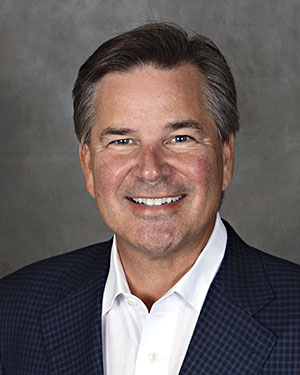 FOCUS ON SMALL MEETINGS
FOCUS ON SMALL MEETINGS
Larry Luteran
Senior Vice President of Group Sales and Industry Relations
Hilton Worldwide
Looking ahead to 2015, we expect to see strong growth in the meetings and events environment, continuing the momentum from 2014. As we look to raise greater awareness across industries on the importance and value of meetings, there are three major trends I would like to highlight: 1. an increased value being placed on face-to-face meetings; 2. a broadening view of attendees’ experiences when planning events; and 3. a growing recognition of the importance of small meetings.
1. In the hyper-connected world we live in, business professionals, CEOs, meeting professionals and others are starting to place a much higher value on the power of human connection and the impact that meeting face-to-face brings to the table. In fact, a study conducted by IMEX Group in partnership with the Meetology Group found that on average, face-to-face meetings generate 30 percent more ideas than their virtual counterparts. In 2015, we anticipate seeing an even higher value placed on networking in-person and the strong impact it can have on reaching business objectives.
2. We’ve seen a shift toward considering the complete attendee experience when planning events and meetings. As an example, we know more and more travelers are looking to adopt or continue healthy habits while on the road. For Hilton, our Connect philosophy is rooted in the power of human interaction and enriching people’s lives. We recognize that planning is no longer about just delivering on a singular business objective — it’s about considering every element of attendees’ well-being. Professionals can no longer just focus on the logistics of an event, but instead, have to think holistically about the attendees to ensure they are getting the most out of the experience.
3. We also anticipate a growing recognition of the importance of many small meetings, something we are passionate about at Hilton. In an industry used to planning meetings at a mass scale, this trend requires us to shift our thinking and evolve what we are offering. In order to advance our relationships with customers, we need to clearly understand what meeting professionals need to be successful, no matter the scale of their event. For most small meetings this means maximizing efficiency and streamlining the customer experience.
At Hilton we are excited to see where 2015 takes us and look forward to continuing to provide meeting professionals with the best tools, resources and expertise in order to help them create unforgettable experiences. Regardless of what the future holds for the industry, we will continue to champion the power of meetings at the individual level, bringing to life the magic that happens when you meet face-to-face.
THE CVB PERSPECTIVE
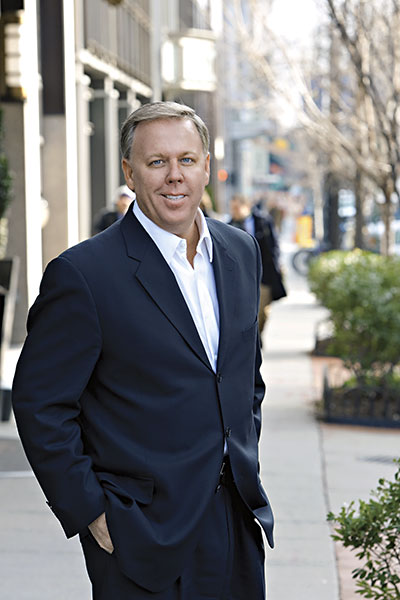 EXPANDING ROLES FOR DMOs
EXPANDING ROLES FOR DMOs
Michael Gehrisch
President and CEO
Destination Marketing Association International
In 2015, I see the meetings industry continuing to maintain its position as a tool for economic development and social engagement, with official destination marketing organizations (DMOs) — also known as convention and visitor bureaus — serving an integral part of the meetings industry’s growth.
DMOs not only understand the economic value of direct spending from the events themselves, but also recognize meetings as a gateway for business exchange, development, innovation and investment. The next years ahead will see DMOs take on an even greater role in aligning destination promotion activities with economic development interests of their communities. DMOs will be assuming greater roles as destination marketers to help develop meetings segments that align with their destinations’ targeted economic clusters.
This falls in line with other trends we are seeing: Meetings are becoming more targeted in content and regional in scope. The focus on ROI has broadened to include not only professional development and business advancement, but also quality of unique experiences and social good. With this in mind, meeting planners will find DMOs to be unique resources with which to garner support for their events — whether large or small — from local venues, city officials and the business community.
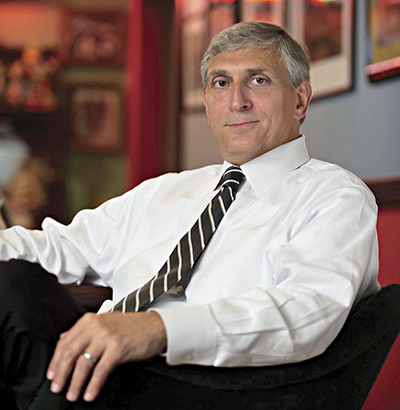 MUSIC CITY PREDICTS AN ENCORE PERFORMANCE
MUSIC CITY PREDICTS AN ENCORE PERFORMANCE
Butch Spyridon
President and CEO
Nashville Convention & Visitors Corp.
From Nashville’s perspective, 2014 has been a record year for business on the books. In its second full year of operation, groups booking the Music City Center have exceeded our expectations, from the diversity and size of the groups to the time of the year people are booking. Both the Music City Center and Gaylord Opryland Resort and Convention Center are performing exceptionally well with both repeat and new business.
Trends for Nashville are tied to the new Music City Center, new hotels and new restaurants. This growth has opened the door not only to new clients but also to expanded media coverage for the city. We are proud to report that our loyal repeat clients are on the rise attendance-wise, and new business we’ve never been able to recruit is now booking Nashville and beating their attendance projections. Barring outside influence, we see the next two years in Nashville as very strong.
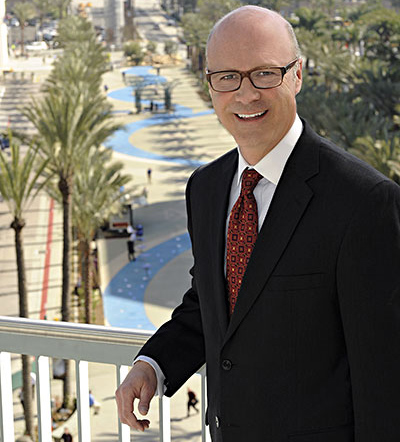 GROWING NEED FOR ‘BIG DATA’
GROWING NEED FOR ‘BIG DATA’
Jay Burress
President and CEO
Anaheim/Orange County
Visitor & Convention Bureau
As we head into 2015 planning and a major expansion at the Anaheim Convention Center, we’ve been keenly focused on what we could do to help ease the burden of the planners we work with and provide them with the exact services they are looking for when planning small or large events. After talking with several planners and reviewing the resources we have available to us as a bureau, we saw that there was a growing need for planners to have research and “big data” to help them build attendance at the meetings/events they plan. By disseminating the big data we collect on our local community and beyond, we can help drive attendance for small and large events. We see this as an opportunity to grow our role and provide a unique aspect and service to planners as a greater part in our ever-changing role as the DMO of the future.
Sustainability: Last month, in conjunction with the city of Anaheim, Anaheim Convention Center announced the 2.4 Megawatt Anaheim Solar Energy Plant, which sits on the rooftop of the Anaheim Convention Center. This recent announcement follows a number of initiatives that is part of the Anaheim Convention Center’s Sustainability Program, which was established with Aramark Leisure Services in 2004. Over the years, we’ve implemented several sustainable programs including: purchasing a herd of free-range, grass-fed cattle; creating a convention center recycling area where plastic, cardboard, aluminum, glass, electronics and paper are separated and food waste is composted; and planting a 2,000-sf garden with an array of adaptive plants and herbs on top of the Arena Box Office roof. As an organization that has a growing footprint and presence in Anaheim, we’ve made a commitment to tirelessly search out alternatives to conducting our business that are sustainable and positively impact our local community.
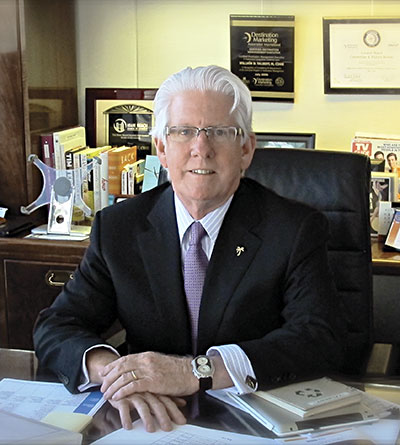 DOING MORE GOOD
DOING MORE GOOD
William D. Talbert, III, CDME
President and CEO
Greater Miami Convention & Visitors Bureau
Corporate social responsibility is definitely trending upward among corporate and association planners. We have received more requests than ever for volunteer projects from groups meeting in Miami. One recent example comes to mind. In May 2014, Tourism Cares, a national organization, attracted more than 350 travel industry professionals to Miami to make a difference in our community by jump-starting the restoration of the Miami Marine Stadium.
Closed for more than 20 years post Hurricane Andrew, the facility was a lost treasure for residents and visitors. The Tourism Cares volunteers rolled up their sleeves and showed that doing something good for a community also translates into doing something positive for travel. Representing 29 states, four countries and 89 different companies, including Amadeus, Expedia, Norwegian Cruise Line, Tauck, Collette and many, many more, the volunteers planted 800 trees and 11,000 seagrass plants at the Historic Virginia Key Beach Park and cleared out truckloads of debris from the iconic Miami Marine Stadium. Their efforts have paved the way for renovations currently being planned.
Without doubt the companies and organizations that sponsored the hundreds of volunteers for the Miami Marine Stadium effort are an excellent example of the growing commitment to social responsibility. This example, along with others, have made us keenly aware that there is a renewed and growing trend to give back. The GMCVB’s Convention Services team offers planners a wide array of volunteer opportunities for groups of all sizes and interests — a resource that is being tapped more and more.
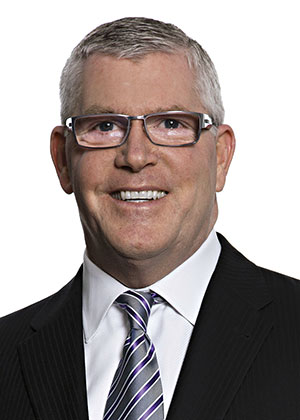 WINDY CITY MEETINGS TRANSFORMATION
WINDY CITY MEETINGS TRANSFORMATION
Don Welsh
President and CEO
Choose Chicago
Chicago is heading in the right direction and at an aggressive pace. Group room demand is growing in the right direction. New sales strategies, including the development of strategic partnerships with key intermediaries, has proven to be a smart investment for Choose Chicago.
Following a redeployment within our sales team, corporate and association bookings for Chicago increased by 12 percent since 2013. We have also seen a 37 percent increase In-the-Year-for-the-Year business from this market from 2013 to 2014.
Chicago’s meetings industry is experiencing its greatest transformation yet. With more than 37,000 hotel rooms in the Central Business District, and an additional 2,500 rooms in less than three years, Chicago remains one of the fastest growing domestic markets for new hotel development, reflecting the investment community’s perception that Chicago will support that growth. The implementation of exhibitor rights at McComick Place and tremendous support from labor have been critically important to this transformation.
The McCormick Place complex is about to undergo another transformation. We are reinvesting in what we have and planning for the future. Beginning in early 2015, construction will begin on the 10,000-seat Event Center and the 1,200-room Marriott Marquis, both of which are scheduled to open in 2017. This addition to the complex will allow for even greater flexibility, especially for groups who don’t require the use of the larger meeting space at the convention center.
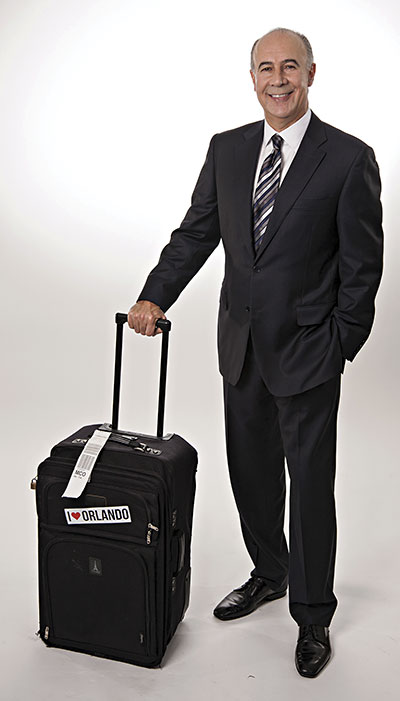 MORE VIP INVOLVEMENT IN SITE SELECTION
MORE VIP INVOLVEMENT IN SITE SELECTION
George Aguel
President and CEO
Visit Orlando
A developing trend that we are seeing more of at Visit Orlando when it comes to the future of site selection, is the hosting of more of the group’s leadership coming to experience the destination — in addition to the organization’s meeting professional. We oftentimes find ourselves working with meeting sponsors, board members and even presidents and CEOs of companies and associations.
At Visit Orlando we have extraordinary relationships with our members that provide every kind of service, property and venue imaginable. So for incoming sites, Visit Orlando takes the lead and handles everything — from planning to execution in close coordination with our members — so the meeting professional and his or her leadership team have a seamless experience engaging with our destination. And since tourism is the No. 1 industry in Orlando, our community has hospitality in its DNA and understands how to help us go that extra mile for a client.
PHOENIX AFFORDABILITY GROWS
Steve Moore
President and CEO
Visit Phoenix
Phoenix has always been a natural fit for corporate and incentive meetings because of our reliably sunny weather, extensive resort portfolio and unique teambuilding opportunities. But the value and flexibility Phoenix offers corporate meeting groups has never been greater. Among the top 10 airports in America, Sky Harbor consistently has the lowest round-trip airfare averages, so it’s more affordable to fly here than it is to other incentive markets. And our resorts compete so much for incentive business — not just against other destinations but with each other — they stay on top of trends such as offering activities for families or weaving desert adventure options into itineraries.
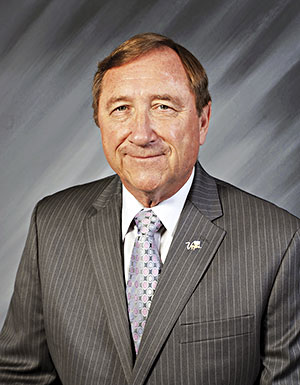 ‘GREEN’ EXPECTATIONS ARE GROWING
‘GREEN’ EXPECTATIONS ARE GROWING
Rossi Ralenkotter
President and CEO
Las Vegas Convention and Visitors Authority
Sustainability efforts continue to be a key component in the meetings and conventions industry as planners and show organizers realize the environmental impact their events have on the local community. They’ve come to expect a certain level of environmental consciousness from their venues and assistance in implementing greener practices to reduce waste and energy.
In an effort to exceed those expectations in addition to our own desire to be environmentally active, the Las Vegas Convention Center (LVCC) is committed to improving our role in sustainable operations, environmental impacts and energy conservation.
The LVCC is active in the Environmental Protection Agency’s Waste Wise Program with a primary objective of diverting recyclable materials away from landfills. Through working in close collaboration with building partners, vendors and employees, we achieved a record recycle rate of 69 percent in 2013 by processing 5,518 tons of material — that’s the equivalent of 19 Boeing 747s of waste from landfills.
Inside the exhibit halls of the LVCC, the process of converting to energy-efficient lighting that delivers up to 20 percent more light while using 42 percent less energy is nearly complete. In addition, low-flow faucets and toilets have been installed throughout the facility to reduce water usage, and desert landscaping has been maximized throughout the facility grounds.
To reduce fuel consumption, the LVCVA promotes the use of alternative energy with 90 percent of its vehicles powered by electric or propane. Visitors can take advantage of four free electric vehicle charging stations located in the LVCC parking lot. The charging stations were made possible by a grant from the Consumer Electronics Association, the producers of International CES.
Sustainability is a guiding principal of the Las Vegas Global Business District (LVGBD), a $2.3 billion project that will expand and reinvent the LVCC and its surrounding areas over the next decade. Solar, energy and water efficiency components all will be incorporated into the design and construction of LVGBD. Reducing waste, conserving water and saving energy is the right thing to do for our customers, our community and our environment.
GLOBAL EXHIBITIONS TRENDS
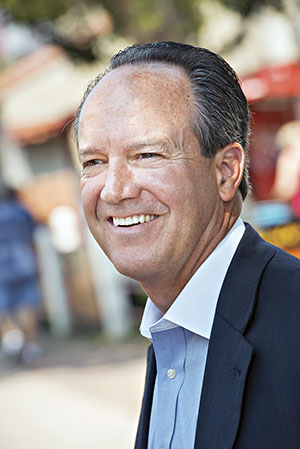 David DuBois, CMP, CAE, FASAE, CTA
David DuBois, CMP, CAE, FASAE, CTA
President & CEO
International Association of Exhibitions and Events
What does 2015 look like for the global exhibitions industry?
The International Association of Exhibitions and Events (IAEE) closely monitors the health and viability of the global exhibitions industry. We do this through the IAEE Future Trends Task Force who review and extrapolate data to bring viable trend analysis to the exhibitions and events industry.
We’re seeing several trends in the coming year, but a few stand out. To begin, international attendee growth is up substantially, and we expect it to keep growing. Next, new technology such as wearables, as well as advanced smartphones are exploding, opening whole new avenues to reach pre- and post-show attendees, thus extending the life of a show. As a segue, mobile computing with ever-changing smartphone capabilities and the myriad of apps available, continues to grow creating a huge avenue for marketers to deliver information in a timely and relevant fashion, again, before, during and after a show. Finally, while the registration focus used to be about getting a specific job title or function to a show, the industry is evolving to further define attendee engagement. In 2015 we will see best practices emerge on how to define engagement pre -and post- show and what the best measurements of ROI will be.
Visit www.iaee.com for the IAEE Future Trends White Paper, which was released at Expo! Expo! IAEE’s Annual Meeting and Exhibition, December 9-11 in Los Angeles. C&IT










